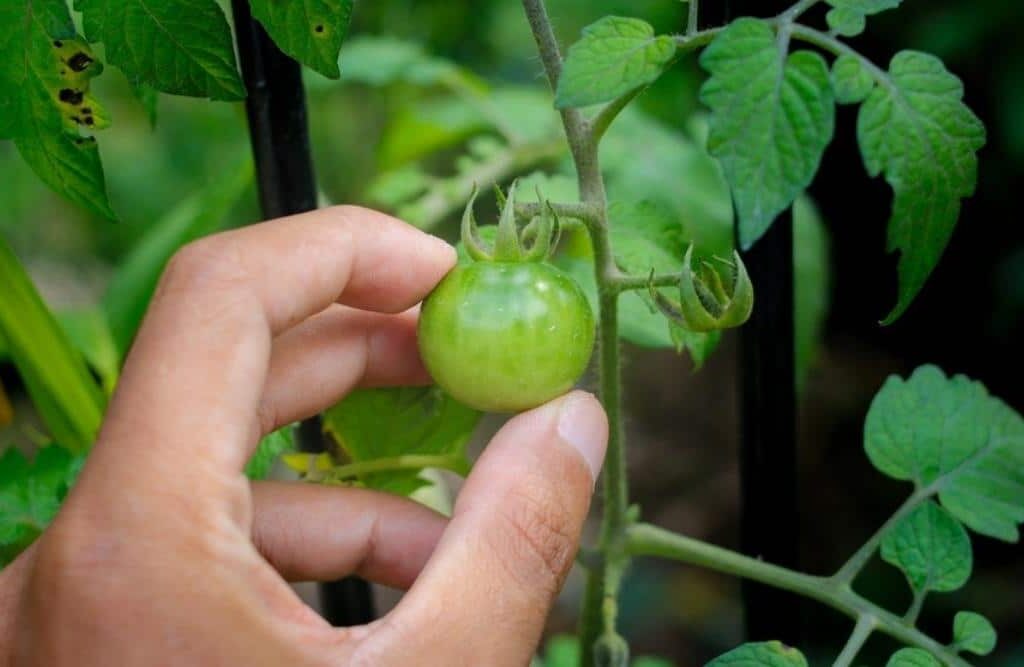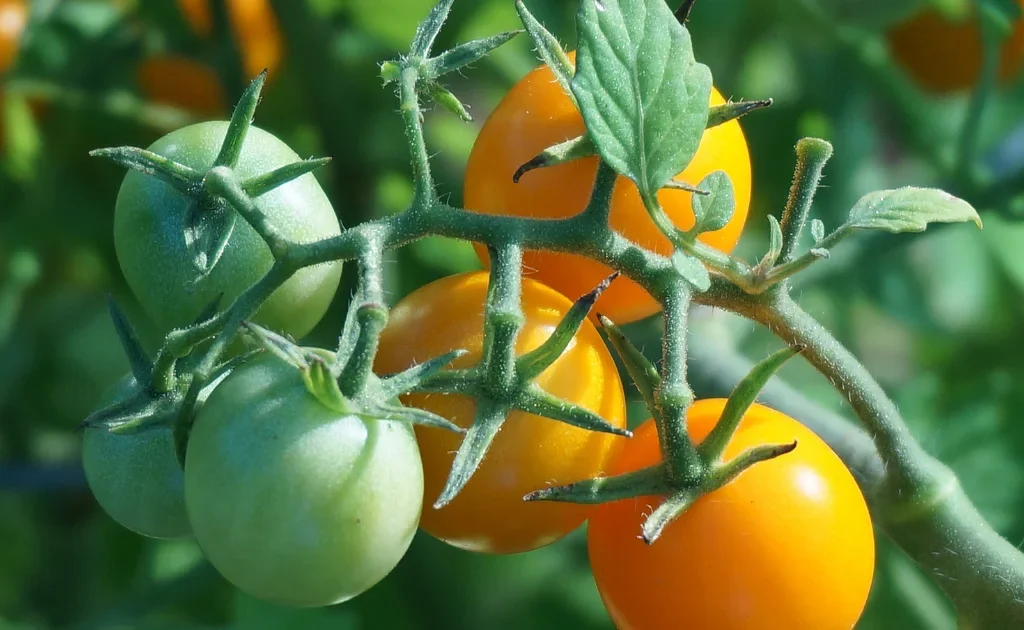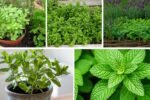Few gardening experiences are as satisfying as picking a sun-warmed, vine-ripened tomato you grew yourself. Whether you love slicing them for sandwiches, tossing them in salads, or turning them into rich sauces, homegrown tomatoes taste worlds better than anything you’ll find in a store.
If you’ve ever wanted to grow your own tomatoes but weren’t sure how to start — this comprehensive guide has you covered. From choosing the right varieties to planting, caring, and harvesting, we’ll walk you through how to start growing tomatoes step by step.

Why Grow Your Own Tomatoes?
Tomatoes are one of the most popular garden crops worldwide, and for good reason:
- Better flavor: Homegrown tomatoes are sweeter, juicier, and more flavorful than store-bought.
- More variety: Choose from hundreds of heirloom and hybrid varieties in unique colors, shapes, and tastes.
- Cost-effective: A single plant can produce pounds of tomatoes over a season.
- Health benefits: Rich in vitamin C, potassium, antioxidants, and lycopene.
- Therapeutic hobby: Gardening is a proven stress reliever.

Choosing the Right Tomato Varieties
Before planting, decide what kind of tomatoes you’d like to grow. There are two primary types:
1. Determinate (Bush) Tomatoes
- Grow to a fixed height (2-3 feet)
- Produce most fruit at once over a few weeks
- Ideal for containers, small spaces, or short growing seasons
- Examples: Roma, Celebrity, Patio Princess
2. Indeterminate (Vining) Tomatoes
- Continue growing and producing fruit until frost
- Can grow 6 feet or taller
- Require staking or caging
- Examples: Beefsteak, Cherokee Purple, Sungold
Consider these factors when choosing:
- Available space
- Climate and growing season length
- Purpose (slicing, canning, cherry tomatoes, sauces)

When to Plant Tomatoes
Tomatoes are warm-season crops that don’t tolerate frost. The ideal time to plant them is:
- After the last frost date in your region
- When soil temperatures consistently stay above 60°F (16°C)
If you’re starting from seed, sow seeds 6-8 weeks before the last expected frost indoors.
Starting from Seeds vs. Seedlings
Starting from Seeds
- Cheaper, offers more variety options
- Requires indoor growing space, grow lights, and patience
- Takes 6-8 weeks before transplanting outside
Buying Seedlings
- Convenient and time-saving
- Available at garden centers in spring
- Great for beginners with limited time or space

Preparing the Planting Site
Tomatoes thrive in full sun, needing 6-8 hours of direct sunlight daily. Choose a spot with:
- Well-draining, loamy soil
- pH between 6.0 and 6.8
- Good air circulation to prevent fungal diseases
Improve soil before planting:
- Mix in compost or well-aged manure for nutrients
- Add a handful of bone meal to each planting hole for root growth
- Avoid planting tomatoes in the same spot where peppers, eggplants, or potatoes grew last year to prevent soil-borne diseases

How to Plant Tomatoes
For both seedlings and transplants:
1. Harden Off Seedlings
Gradually acclimate indoor-grown seedlings to outdoor conditions by placing them outside for a few hours daily over a week, increasing exposure time.
2. Plant Deep
Unlike many plants, tomatoes benefit from being planted deep:
- Remove lower leaves
- Bury ⅔ of the stem underground — this encourages extra root development for a stronger plant
3. Spacing
- Determinate varieties: 18-24 inches apart
- Indeterminate varieties: 24-36 inches apart, with 3-4 feet between rows
4. Water Well
Give each plant a deep drink of water after planting.

Essential Tomato Care Tips
1. Watering
- Keep soil consistently moist but not waterlogged.
- Water at the base of the plant to avoid wetting leaves, which can lead to diseases.
- Aim for 1-2 inches of water per week, more in hot, dry weather.
2. Mulching
Add 2-3 inches of organic mulch (straw, shredded leaves, or compost) around the plants to:
- Retain soil moisture
- Regulate temperature
- Reduce weeds
- Prevent soil-borne diseases from splashing onto leaves
3. Staking and Caging
Support plants to keep fruit off the ground, improve airflow, and ease harvesting:
- Use tomato cages for determinate varieties.
- Use stakes or trellises for indeterminate varieties, tying stems gently with garden twine.
4. Fertilizing
- Fertilize at planting with a balanced, slow-release fertilizer.
- Side-dress plants with compost or tomato fertilizer every 3-4 weeks once fruit begins forming.
- Avoid excessive nitrogen — it encourages leaf growth over fruit production.
Common Tomato Problems and Solutions
| Problem | Cause | Solution |
|---|---|---|
| Yellowing leaves | Overwatering, nutrient imbalance | Adjust watering, fertilize appropriately |
| Blossom-end rot | Calcium deficiency, uneven watering | Water consistently, add calcium to soil |
| Cracked fruit | Inconsistent watering | Maintain even soil moisture |
| Tomato hornworms | Caterpillar pests | Handpick or use organic pest control |
| Early blight and powdery mildew | Fungal diseases | Space plants properly, avoid wet leaves, use fungicide |
Harvesting Tomatoes
When to harvest:
- Pick when tomatoes are fully colored and slightly soft when gently squeezed.
- Leave them on the vine as long as possible for peak flavor.
Harvesting tips:
- Use garden shears or gently twist and pull fruit from the vine.
- Pick fruit regularly to encourage continuous production.
Storing and Using Homegrown Tomatoes
- Room temperature is best for fresh tomatoes.
- Avoid refrigerating fully ripe tomatoes — it dulls flavor and texture.
- Use overripe tomatoes for sauces, soups, and salsas.
- Preserve excess harvest by:
- Canning
- Freezing
- Sun-drying
Final Thoughts
Growing your own tomatoes is one of the most rewarding and delicious gardening projects you can undertake. With hundreds of varieties to choose from and relatively simple care requirements, it’s a perfect crop for beginners and experienced gardeners alike.
By following this guide — from selecting the right type and planting to maintaining, troubleshooting, and harvesting — you’ll enjoy a season of sweet, juicy, and flavorful tomatoes straight from your garden.
So grab a few seeds or seedlings, roll up your sleeves, and get growing! Your future self will thank you when you bite into that first vine-ripened tomato you nurtured yourself.





